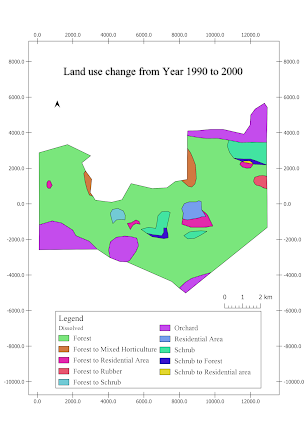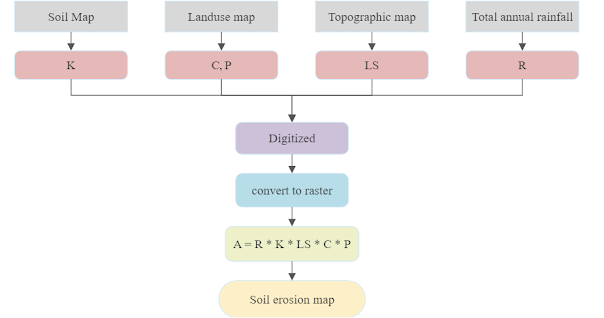Project 4: Land Surfuce Temperature Analysis
In the past, weather stations have been used to measure surface temperature, but limited station coverage has led to incomplete datasets. However, land surface temperature (LST) datasets derived from satellite measurements offer high-resolution and wide coverage, especially for studying urban heat island effects. Satellite technology, such as Moderate Resolution Imaging Spectroradiometer (MODIS), provides precise temporal and spatial resolution for LST estimation.
The LST value can be extracted through pixel-based calculation. The value of each pixel will be calculated by using equation 1 (Wan, 2007):
𝑳𝒂𝒏𝒅 𝒔𝒖𝒓𝒇𝒂𝒄𝒆 𝒕𝒆𝒎𝒑𝒆𝒓𝒂𝒕𝒖𝒓𝒆 (𝒊𝒏 °𝑪) = (𝑝𝑖𝑥𝑒𝑙 𝑣𝑎𝑙𝑢𝑒 × 0.02) − 273.15
To obtain LST values, the study area (Cameron Highlands) is extracted from a shapefile, and monthly LST is derived by compositing four satellite images. The composite image's projection is adjusted to ensure proper alignment with the Earth's surface, as an incorrect coordinate reference system (CRS) can lead to inaccurate results. LST values are calculated using a raster calculator and a specific equation.
Diagram above shows the day-time of the Land Surface Temperature Map in Cameron Highlands on March 2006.
Diagram above shows the night-time of the Land Surface Temperature Map in Cameron Highlands on March 2006.
Diagram above shows the day-time of the Land Surface Temperature Map in Cameron Highlands on March 2022.
Diagram above shows the night-time of the Land Surface Temperature Map in Cameron Highlands on March 2022.
To get a clearer vision, the data of the land surface temperature is calculated and drawn as table.
Table above shows the average, minimum, maximum and range of the day-time and night-time for March 2006 and 2022.
From the table above, it is observed that the range of land surface temperature during daytime in the year 2022 (14.42°𝑪) is higher than the range in the year 2006 (10.81°𝑪), even though the average land surface daytime temperature in the year 2022 (24.02°𝑪) for is lower compared to the average land surface daytime temperature in the year 2006 (25.58°𝑪). Besides, the range of the land surface temperature for the night-time in the year 2022 (12.17°𝑪) is higher than the nighttime in the year 2006 (9.38°𝑪).
In my opinion, the changes in the land surface temperature of Cameron Highlands are due
to the topography and localized factors. The presence of mountains and valleys in the topography creates microclimates that exhibit more pronounced temperature variations.
to the topography and localized factors. The presence of mountains and valleys in the topography creates microclimates that exhibit more pronounced temperature variations.
Additionally, local factors such as land use changes, urbanization, and vegetation cover can influence temperature patterns within specific areas. These localized effects can further contribute to temperature variations, leading to a wider temperature range even when the average temperature is lower.
Furthermore, I believe that radiative cooling plays a role in the observed temperature changes as it is a natural process where heat energy is emitted from objects or surfaces, resulting in cooling effects. During clear nights, when skies are unobstructed and conditions are calm, radiative cooling can cause temperatures to decrease significantly. Heat is radiated away from the land surface, leading to cooler nighttime temperatures. This cooling effect contributes to a wider temperature range while the average temperature decreases.









Comments
Post a Comment